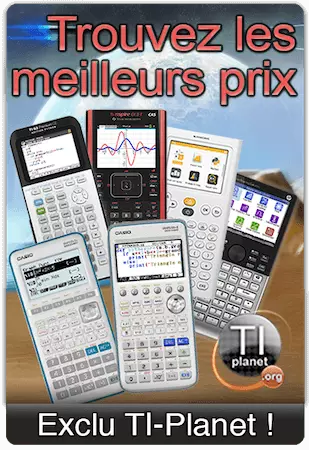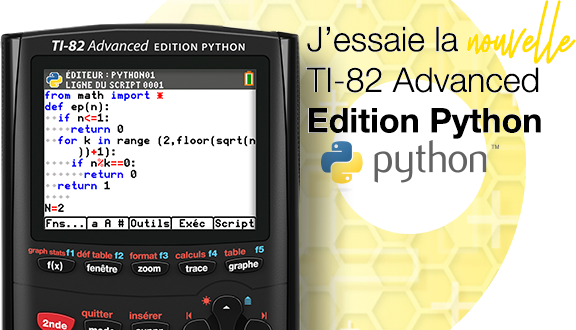mathematiques2
DownloadTélécharger
Actions
Vote :
ScreenshotAperçu

Informations
Catégorie :Category: nCreator TI-Nspire
Auteur Author: kalistak
Type : Classeur 3.0.1
Page(s) : 1
Taille Size: 3.38 Ko KB
Mis en ligne Uploaded: 17/10/2024 - 12:55:28
Uploadeur Uploader: kalistak (Profil)
Téléchargements Downloads: 8
Visibilité Visibility: Archive publique
Shortlink : https://tipla.net/a4258194
Type : Classeur 3.0.1
Page(s) : 1
Taille Size: 3.38 Ko KB
Mis en ligne Uploaded: 17/10/2024 - 12:55:28
Uploadeur Uploader: kalistak (Profil)
Téléchargements Downloads: 8
Visibilité Visibility: Archive publique
Shortlink : https://tipla.net/a4258194
Description
Fichier Nspire généré sur TI-Planet.org.
Compatible OS 3.0 et ultérieurs.
<<
1. Atomic Radius: * Definition: The distance from the nucleus to the outermost electron shell of an atom. * Across a Period (Left to Right): Decreases (due to increased nuclear charge pulling electrons closer). * Down a Group (Top to Bottom): Increases (due to the addition of electron shells). 2. Ionization Energy: * Definition: The energy required to remove an electron from a gaseous atom. * Across a Period (Left to Right): Increases (electrons are held more tightly by increasing nuclear charge). * Down a Group (Top to Bottom): Decreases (outer electrons are further from the nucleus and easier to remove). 3. Electron Affinity: * Definition: The energy change when an atom gains an electron to form a negative ion. * Across a Period (Left to Right): Increases (atoms more readily gain electrons as nuclear charge increases). * Down a Group (Top to Bottom): Decreases (larger atoms have a weaker attraction for additional electrons). 4. Electronegativity: * Definition: The ability of an atom to attract shared electrons in a bond. * Across a Period (Left to Right): Increases (atoms become more effective at attracting electrons). * Down a Group (Top to Bottom): Decreases (larger atoms are less effective at attracting electrons). 5. Metallic Character: * Definition: How easily an atom loses electrons to form positive ions (cations). * Across a Period (Left to Right): Decreases (metals are on the left, non-metals on the right). * Down a Group (Top to Bottom): Increases (atoms lose electrons more easily as size increases). 6. Nonmetallic Character: * Definition: The tendency of an atom to gain electrons and form negative ions (anions). * Across a Period (Left to Right): Increases (non-metals are on the right side of the periodic table). * Down a Group (Top to Bottom): Decreases (non-metals become less reactive down a group). 7. Ionic Radius: * Definition: The radius of an ion, which changes based on whether an electron is gained or lost. * Cations: Smaller than their neutral atoms (due to loss of electron(s) and decreased electron repulsion). * Anions: Larger than their neutral atoms (due to gain of electron(s) and increased electron repulsion). * Across a Period (Left to Right): Decreases within an isoelectronic series (due to increasing nuclear charge). * Down a Group (Top to Bottom): Increases (due to additional electron shells). 8. Reactivity: * Definition: The tendency of an atom to undergo chemical reactions. * Metals: * Across a Period (Left to Right): Decreases (metallic character decreases). * Down a Group (Top to Bottom): Increases (larger atoms lose electrons more easily). * Nonmetals: * Across a Period (Left to Right): Increases (non-metals gain electrons more easily). * Down a Group (Top to Bottom): Decreases (larger atoms attract electrons less readily). Definition: Entropy is the measure of disorder or randomness in a system.(S > 0: System becomes more disordered (e.g., melting, vaporization).(S < 0: System becomes more ordered (e.g., freezing, condensation).(Third Law of Thermodynamics: A perfect crystal at 0 K has zero entropy. Entropy increases: * Solids (s) Liquids (l) Gases (g): Entropy increases as particles have more freedom to move. * Solid (s) Aqueous (aq): Positive entropy change because dissolved ions are more disordered than a solid. * More moles of products than reactants: This leads to an increase in entropy because more particles usually means more disorde Exothermic vs. Endothermic Reactions Cheat Sheet: Exothermic Reaction: Definition: Releases heat to the surroundings. H (enthalpy change): Negative (H < 0). Energy Comparison: Reactants have higher energy than products. Effect on surroundings: Warms up surroundings. Endothermic Reaction: Definition: Absorbs heat from the surroundings. H (enthalpy change): Positive (H > 0). Energy Comparison: Products have higher energy than reactants. Effect on surroundings: Cools down surroundings. Hybridization in Carbon: sp³ Hybridization (Tetrahedral): Example: Methane (CH) Carbon forms four single bonds, using sp³ orbitals in a tetrahedral shape with bond angles of 109.5°. sp² Hybridization (Trigonal Planar): Example: Ethene (CH) Carbon forms a double bond, using sp² orbitals in a trigonal planar shape with bond angles of 120°. The unhybridized p orbital forms a À bond. sp Hybridization (Linear): Example: Ethyne (CH) Carbon forms a triple bond, using sp orbitals in a linear shape with bond angles of 180°. Two À bonds are formed from unhybridized p orbitals. Ligand: A ligand is an ion or molecule that donates a pair of electrons to a metal ion to form a coordinate bond. Types: Monodentate (e.g., HO) Bidentate (e.g., ethylenediamine) Polydentate (e.g., EDTA) Made with nCreator - tiplanet.org
>>
Compatible OS 3.0 et ultérieurs.
<<
1. Atomic Radius: * Definition: The distance from the nucleus to the outermost electron shell of an atom. * Across a Period (Left to Right): Decreases (due to increased nuclear charge pulling electrons closer). * Down a Group (Top to Bottom): Increases (due to the addition of electron shells). 2. Ionization Energy: * Definition: The energy required to remove an electron from a gaseous atom. * Across a Period (Left to Right): Increases (electrons are held more tightly by increasing nuclear charge). * Down a Group (Top to Bottom): Decreases (outer electrons are further from the nucleus and easier to remove). 3. Electron Affinity: * Definition: The energy change when an atom gains an electron to form a negative ion. * Across a Period (Left to Right): Increases (atoms more readily gain electrons as nuclear charge increases). * Down a Group (Top to Bottom): Decreases (larger atoms have a weaker attraction for additional electrons). 4. Electronegativity: * Definition: The ability of an atom to attract shared electrons in a bond. * Across a Period (Left to Right): Increases (atoms become more effective at attracting electrons). * Down a Group (Top to Bottom): Decreases (larger atoms are less effective at attracting electrons). 5. Metallic Character: * Definition: How easily an atom loses electrons to form positive ions (cations). * Across a Period (Left to Right): Decreases (metals are on the left, non-metals on the right). * Down a Group (Top to Bottom): Increases (atoms lose electrons more easily as size increases). 6. Nonmetallic Character: * Definition: The tendency of an atom to gain electrons and form negative ions (anions). * Across a Period (Left to Right): Increases (non-metals are on the right side of the periodic table). * Down a Group (Top to Bottom): Decreases (non-metals become less reactive down a group). 7. Ionic Radius: * Definition: The radius of an ion, which changes based on whether an electron is gained or lost. * Cations: Smaller than their neutral atoms (due to loss of electron(s) and decreased electron repulsion). * Anions: Larger than their neutral atoms (due to gain of electron(s) and increased electron repulsion). * Across a Period (Left to Right): Decreases within an isoelectronic series (due to increasing nuclear charge). * Down a Group (Top to Bottom): Increases (due to additional electron shells). 8. Reactivity: * Definition: The tendency of an atom to undergo chemical reactions. * Metals: * Across a Period (Left to Right): Decreases (metallic character decreases). * Down a Group (Top to Bottom): Increases (larger atoms lose electrons more easily). * Nonmetals: * Across a Period (Left to Right): Increases (non-metals gain electrons more easily). * Down a Group (Top to Bottom): Decreases (larger atoms attract electrons less readily). Definition: Entropy is the measure of disorder or randomness in a system.(S > 0: System becomes more disordered (e.g., melting, vaporization).(S < 0: System becomes more ordered (e.g., freezing, condensation).(Third Law of Thermodynamics: A perfect crystal at 0 K has zero entropy. Entropy increases: * Solids (s) Liquids (l) Gases (g): Entropy increases as particles have more freedom to move. * Solid (s) Aqueous (aq): Positive entropy change because dissolved ions are more disordered than a solid. * More moles of products than reactants: This leads to an increase in entropy because more particles usually means more disorde Exothermic vs. Endothermic Reactions Cheat Sheet: Exothermic Reaction: Definition: Releases heat to the surroundings. H (enthalpy change): Negative (H < 0). Energy Comparison: Reactants have higher energy than products. Effect on surroundings: Warms up surroundings. Endothermic Reaction: Definition: Absorbs heat from the surroundings. H (enthalpy change): Positive (H > 0). Energy Comparison: Products have higher energy than reactants. Effect on surroundings: Cools down surroundings. Hybridization in Carbon: sp³ Hybridization (Tetrahedral): Example: Methane (CH) Carbon forms four single bonds, using sp³ orbitals in a tetrahedral shape with bond angles of 109.5°. sp² Hybridization (Trigonal Planar): Example: Ethene (CH) Carbon forms a double bond, using sp² orbitals in a trigonal planar shape with bond angles of 120°. The unhybridized p orbital forms a À bond. sp Hybridization (Linear): Example: Ethyne (CH) Carbon forms a triple bond, using sp orbitals in a linear shape with bond angles of 180°. Two À bonds are formed from unhybridized p orbitals. Ligand: A ligand is an ion or molecule that donates a pair of electrons to a metal ion to form a coordinate bond. Types: Monodentate (e.g., HO) Bidentate (e.g., ethylenediamine) Polydentate (e.g., EDTA) Made with nCreator - tiplanet.org
>>












